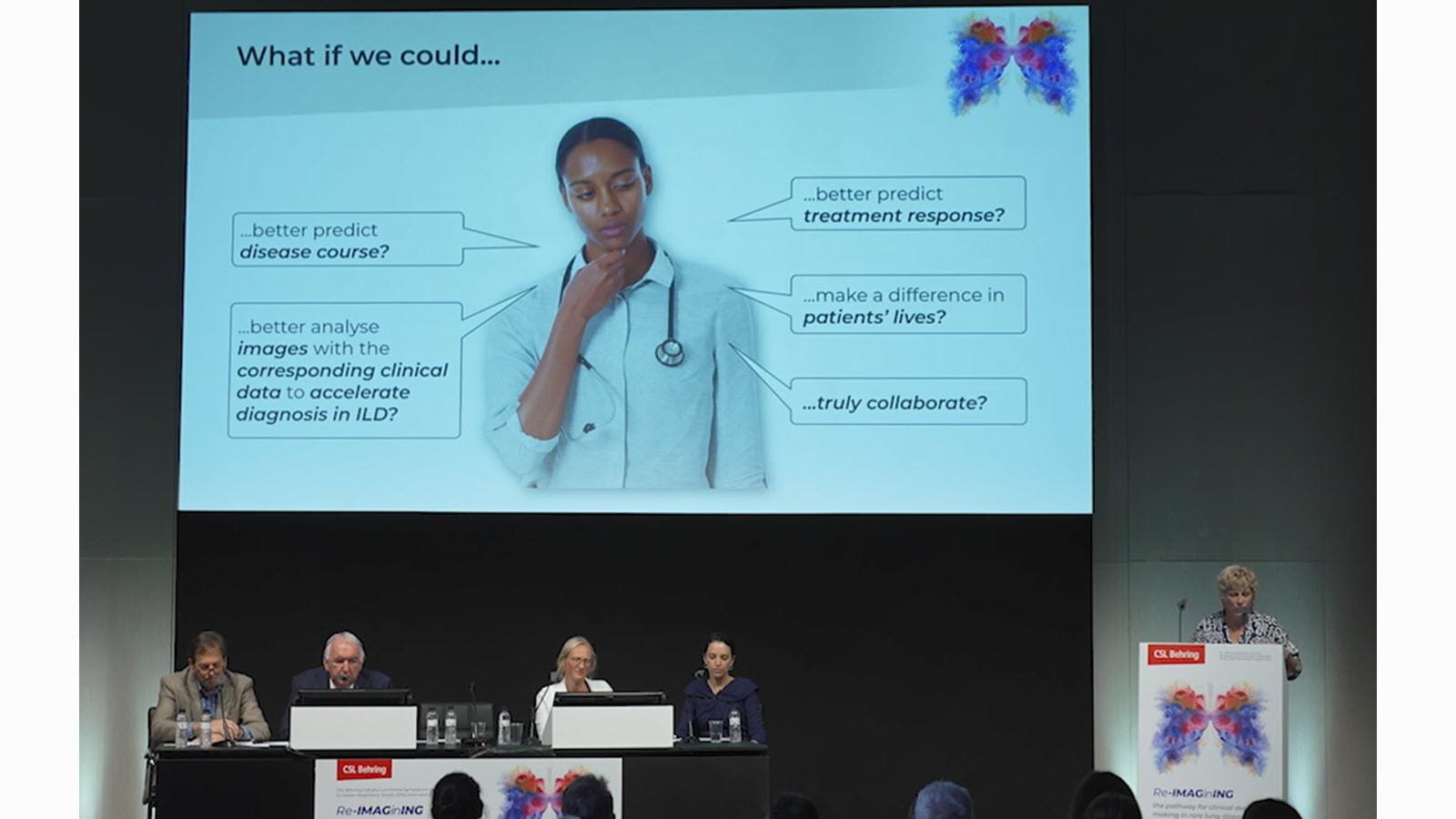The Open Source Imaging Consortium (OSIC) is piling up datapoints about complex lung diseases and wants to be a transformative resource for the world’s researchers.
“We believe this database could be an aggregation model for rare lung disease. Our No. 1 goal is to make radical progress on behalf of patients,” OSIC’s Executive Director Elizabeth Estes said.
That means faster diagnosis and improved treatments that lead to better outcomes for potentially fatal lung conditions. Though it’s not exclusively a lung disease, OSIC also plans to track data about Alpha 1 Antitrypsin Deficiency, a rare genetic condition that results in lung problems that may be misdiagnosed as chronic obstructive pulmonary disease (COPD). OSIC also plans to gather data on bronchiectasis and sarcoidosis.
“OSIC is a bold, 21st century research initiative that borrows its spirit of cross-pollination from the Renaissance”, Estes said when she addressed the European Respiratory Society. OSIC members include industry competitors, universities, hospitals, experts in pulmonology, radiology and artificial intelligence – plus patient organizations. CSL was a founding member of OSIC and CSL’s R&D team is researching potential new treatments for lung diseases.
OSIC’s working groups are diving into data architecture, biomarkers, ethics, privacy issues and the lived experience of those who have interstitial lung disease (ILD), a group of difficult-to-diagnose conditions that scar the lungs and cause shortness of breath. The repository’s primary goal is to amass thousands of high-resolution computed tomography (HRCT) lung scans and enter them into an open-source database that includes accompanying clinical data anonymized to protect patient privacy. The hope is that the power of artificial intelligence will reveal patterns now hidden in the data scattered among numerous institutions and medical facilities.
Estes thanked CSL for the brain power its leaders have contributed to getting OSIC up and running. They include Lars Groenke, R&D Vice President, Managing Director and Co-lead of the Respiratory Therapeutic Area; Michaela Buch-Haensel, Director Global Medical Affairs for the Respiratory Therapeutic Area; Rosza Schlenker-Herzeg, Vice President of Clinical Development, and Michael Larbig, Executive Director, Translational Development. All have been generous with their time and expertise over last several years, she said.
“CSL was there from the very beginning,” Estes said, “I don’t say this lightly, but we would not be here without the support of CSL and other industry partners.”



